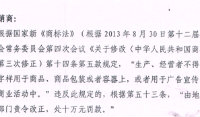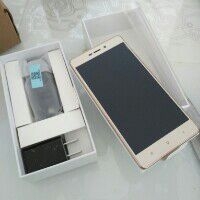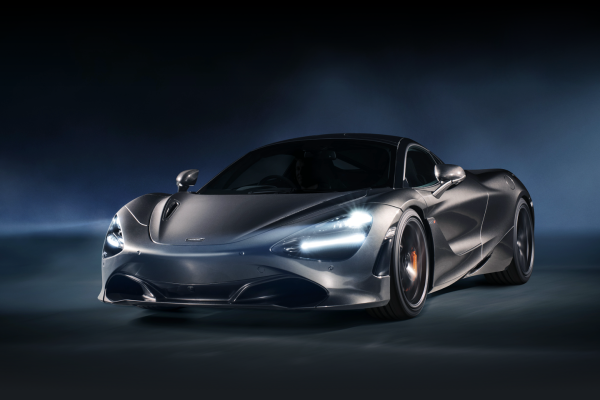Q
When was the McLaren Senna launched?
The McLaren Senna was launched in 2018, which is a supercar attracting attention for its outstanding performance and unique design.
Special Disclaimer: This content is published by users and does not represent the views or position of PCauto.
Related Q&A
Q
Are McLaren Sennas still being produced?
The production of the McLaren Senna officially ended in 2018. This limited-edition supercar was produced in only 500 units globally. As a special model by the brand to pay tribute to the legendary racing driver Ayrton Senna, it is equipped with a 4.0-liter V8 twin-turbocharged engine that can deliver 789 horsepower. It also features an extremely lightweight design, with a curb weight of only 1,198 kilograms, making it the McLaren road-going model with the strongest track performance at that time.
For Malaysian car enthusiasts, although the car was not introduced through the local official channels, a few Sennas imported privately may still appear at high-end automotive events. Such limited-edition supercars usually have extremely high collectible value, and their second-hand market prices often far exceed the original factory prices.
It's worth noting that subsequent limited-edition models like the Elva and Sabre launched by McLaren also carry forward the extreme performance concept of the Senna, but with more specific positioning. It is recommended that car fans interested in McLaren's technology should keep an eye on the newly released Artura hybrid supercar. This car is about to be launched in the Malaysian market, which showcases the brand's technological direction in the electrification era.
Q
Are McLaren Sennas legal?
Regarding the legality of the McLaren Senna in Malaysia, this limited-edition supercar technically meets international emission and safety standards. However, whether it can be driven on Malaysian roads depends on the vehicle's certification status. Malaysia's import vehicle regulations require vehicles to pass the VTA (Vehicle Type Approval) and meet the technical specifications of the local JPJ (Road Transport Department), including right-hand drive configuration. As the Senna is a left-hand drive model, it cannot be registered without special approval. However, a small number of owners may obtain permission through the "display vehicle" or "limited import" methods.
It's worth noting that Malaysia has strict restrictions on the modification of high-performance cars. In particular, when it comes to exhaust noise or power upgrades, owners must comply with JPJ regulations. Top-notch supercars similar to the Senna are usually imported into Malaysia for "track-only" use. If owners want to drive them legally on public roads, they need to entrust professional importers to complete the full set of certification processes, including local modifications such as adjusting the headlight angles and installing rear fog lights.
Other top-end supercars, such as the Ferrari Monza SP series, face similar situations. It is recommended that potential buyers consult Malaysian import vehicle agents or lawyers in advance to understand the latest parallel import policies and tariff calculation methods. The import tax for such models can be as high as over 300% of the vehicle's original price.
Q
How many McLaren Sennas are there?
The McLaren Senna is a limited-production supercar, with only 500 units produced globally. This number was specifically set to honor the Brazilian racing legend Ayrton Senna. Each car comes with a unique serial number to highlight its rarity. It's powered by a 4.0-liter twin-turbocharged V8 engine, delivering a maximum horsepower of 789. It can accelerate from 0 to 100 km/h in just 2.8 seconds, making it an ultimate performance machine built by McLaren for both the track and the road.
For car enthusiasts in Malaysia, although the number of Sennas is extremely limited, they can catch a glimpse of it through McLaren's official channels or high-end car exhibitions. There's even a chance to see the real car at top-notch automotive events in major cities like Kuala Lumpur.
The Senna not only represents McLaren's technological peak in the supercar field but is also a highly sought-after treasure for collectors and performance enthusiasts. Its limited-edition status and legendary background have led to a continuous increase in its value in the used-carmarket.
Q
Does the McLaren Senna have AC?
Yes, the McLaren Senna is indeed equipped with an air-conditioning system. Even though it's a track-focused supercar that emphasizes ultimate performance and lightweight design, McLaren still retains basic comfort features for daily driving, including the air-conditioning system. However, to reduce weight, the air-conditioning in the Senna might be more simplified than that in regular cars. For example, it could feature manual controls or use lightweight materials.
In the hot climate of Malaysia, the air-conditioning in a high-performance car like the Senna is particularly important. After all, while pursuing track performance, comfort during daily driving also needs to be considered. As one of the flagship models in McLaren's Ultimate Series, the design concept of the Senna is to strike a balance between ultimate performance and limited practicality. So, apart from the air-conditioning, it also keeps a basic audio system and power windows. But unnecessary sound-insulation materials and non-essential electronic devices are removed to cut down the vehicle's weight.
It's worth noting that many track-focused supercars, such as the Ferrari XX models or the Lamborghini Essenza SCV12, usually remove the air-conditioning completely to achieve ultimate lightweight. In contrast, the Senna's choice better suits its positioning as a "road-legal track car", making it ideal for markets like Malaysia where both daily driving and track experiences are required.
Q
Is the McLaren Senna faster than the 720S?
Judging from the performance data, the McLaren Senna does offer a more extreme track performance than the 720S. The Senna is equipped with a 4.0 - liter V8 twin - turbocharged engine, which can output 789 horsepower and 800 Nm of torque. Coupled with an ultra - lightweight body weighing only 1,198 kg, it can accelerate from 0 - 100 km/h in just 2.8 seconds. While the 720S has 720 horsepower and 770 Nm of torque, its heavier body (1,283 kg) results in a 0 - 100 km/h acceleration time of 2.9 seconds. The Senna's active aerodynamics design and race - track tuning give it an edge in cornering limits and braking performance. However, as a GT sports car, the 720S focuses more on daily driving comfort, while the Senna is an ultimate machine built for the track. In the hot climate of Malaysia, both cars need to pay attention to the heat dissipation of their turbocharged engines. It is recommended to regularly check the cooling system. For owners who pursue ultimate performance, the Senna is a better choice. But if you need to balance daily use, the 720S is more suitable for Malaysia's diverse road conditions.
Q
Is a McLaren Senna worth it?
As an ultimate supercar specifically designed for the racetrack, the McLaren Senna is definitely worth considering, especially for Malaysian car enthusiasts who pursue ultimate performance. This car is equipped with a 4.0-liter V8 twin-turbocharged engine, which can output 789 horsepower. It can accelerate from 0 to 100 km/h in just 2.8 seconds and has a top speed of over 340 km/h. Its aerodynamic design is precisely tailored for track performance, capable of generating astonishing downforce at high speeds. The Senna's carbon fiber monocoque body and lightweight design make it a true driver's car. Although its comfort on daily roads may not be as good as that of other supercars, if you love track driving or collecting rare car models, its value is irreplaceable.
In Malaysia, due to the hot and humid climate, it is recommended that car owners pay special attention to the maintenance of the cooling system and choose professional maintenance services to ensure the vehicle's performance. Moreover, the rarity of the Senna (only 500 units are produced globally) also endows it with high collection value and it may appreciate in the future.
Q
Why is the McLaren Senna so expensive?
The high price of the McLaren Senna is mainly due to the fact that it's a limited-edition supercar created by the brand to honor the legendary racing driver Ayrton Senna. Only 500 units were produced worldwide, and this scarcity directly drives up its value. This car is equipped with a 4.0-liter twin-turbocharged V8 engine, with a maximum output of 789 horsepower. The body uses a carbon-fiber monocoque structure, weighing only 1,198 kilograms. The extreme lightweight design and aerodynamic features (such as the active rear wing and the bottom diffuser) enable its track performance to approach that of an F1 car. The R & D cost and technological content far exceed those of ordinary supercars.
Moreover, the Senna offers a high degree of customization. Owners can freely choose carbon-fiber components, racing liveries, and even interior materials. This personalized service also adds to the cost. For car enthusiasts in Malaysia, these supercars also have to bear high import taxes and tariffs, further increasing the local selling price.
It's worth mentioning that the Senna belongs to McLaren's "Ultimate Series", along with models like the Speedtail, which are part of the brand's top-tier product line. These models often combine collectible value with the significance of technological benchmarks and may continue to appreciate in the second-hand car market in the future. This is also an important consideration in its pricing strategy.
Q
Why is the McLaren Senna so special?
The McLaren Senna is so special for several reasons. First of all, it's an ultimate track-focused machine crafted by McLaren in honor of the legendary racing driver Ayrton Senna. With only 500 units produced globally, its rarity makes it a dream car for collectors.
Under its hood, there's a 4.0-liter V8 twin-turbocharged engine that can pump out 800 horsepower. Paired with an ultra-lightweight design that weighs just 1198 kilograms, it can sprint from 0 to 100 km/h in a mere 2.8 seconds. This showcases McLaren's top-notch technology in performance and aerodynamics. In particular, the active rear wing and the complex body airflow guides can generate astonishing downforce at high speeds, ensuring stability during track handling.
For Malaysian car enthusiasts, the Senna isn't just a performance beast; it represents the pursuit of pure driving passion. Although its track-oriented nature makes it a bit demanding for daily driving, that's exactly where its charm lies.
Moreover, the Senna's carbon-fiber monocoque cockpit and racing-style interior, like the ultra-lightweight carbon-fiber seats, further highlight its focus on the driving experience. And McLaren's customization service allows every owner to create a one-of-a-kind vehicle.
This car is not only a product of advanced technology but also a tribute to Senna's racing spirit, making it stand out in the super-car world.
Q
Is a McLaren Senna rare?
Yes, the McLaren Senna is indeed a very rare supercar. It's a global limited-edition with only 500 units produced, which makes it a highly sought-after vehicle among collectors and car enthusiasts in Malaysia and around the world. Named after the legendary racing driver Ayrton Senna, the Senna not only features an ultimate aerodynamic design and a lightweight body but also comes equipped with a 4.0-liter V8 twin-turbocharged engine. With a maximum power output of 800 horsepower, its performance is at the track-level standard. In Malaysia, due to the limited production and high price, the chances of seeing the actual car are extremely slim, further enhancing its rarity. For local car fans, the Senna not only represents McLaren's top-notch technology in the supercar field but also symbolizes automotive culture and the racing spirit. If you're interested in this kind of limited-edition supercars, you can also keep an eye on other similar models, such as the Ferrari Monza SP series or the Porsche 911 GT3 RS. They are also well-known for their rarity and high performance, but the Senna's unique track heritage and limited-edition status make it even more special.
Q
How much does a Senna McLaren cost?
In Malaysia, the McLaren Senna, a limited-edition high-performance supercar, has a price that varies depending on the configuration, taxes, and market fluctuations. The price of a new car usually ranges from 4 million to 5 million Malaysian ringgit. The specific price should be based on the quotes from local dealers. This car is equipped with a 4.0-liter V8 twin-turbocharged engine with a maximum power of 789 horsepower. It features a lightweight carbon-fiber structure and is optimized for track performance. With only 500 units produced globally, it has great collectible value.
For car enthusiasts in Malaysia, it should be noted that imported luxury cars are subject to relatively high tariffs and consumption taxes, which will affect the final on-road price. Additionally, the Senna is a track-oriented model, so its daily driving comfort may not be as good as that of other McLaren models like the 720S. However, its extreme performance and rarity still attract many collectors.
If your budget is limited, you can also pay attention to the used-car market, but you need to carefully check the vehicle condition and maintenance records.
Popular Cars
Model Year
Car Compare
Car Photo
Latest Q&A
Q
Does the 2019 Golf GTI have a timing belt or chain?
The 2019 Golf GTI uses a timing chain instead of a timing belt—a design that offers better durability and lower maintenance costs. Typically, a chain lasts as long as the engine itself and rarely needs replacement, whereas a belt requires inspection or replacement every 60,000 to 100,000 km. If neglected, a worn belt can snap and cause severe engine damage.
VW’s EA888 engine family has long relied on chain-driven systems, which are relatively quiet and highly reliable. That said, it’s crucial to periodically check the tensioner’s condition. Some earlier models experienced timing issues due to tensioner design flaws, but this was addressed in the 2019 version.
For performance enthusiasts, a chain system handles high-revving stress better, making it a common choice for hot hatches like the GTI. For daily driving, just stick to VW 50400/50700-spec oil as recommended in the manual—proper lubrication keeps the chain system healthy long-term.
One heads-up: If you hear noticeable metallic rattling near the front of the engine, have the guides or tensioner inspected ASAP. Unlike the telltale belt squeal before failure, this noise is a classic sign of chain-related wear.
Q
What is the recall on the 2019 GTI?
The 2019 Volkswagen Golf GTI was subject to a safety recall addressing two potential issues. First, the fuel pump control unit software could malfunction, potentially causing engine stalling in rare cases. Second, some vehicles might have rear suspension stabilizer link bolts that weren't tightened to specification, posing a loosening risk. Owners can visit authorized dealers for free software updates or bolt retightening.
These proactive recalls demonstrate Volkswagen's commitment to safety. Dealers often handle outstanding recall items during routine maintenance.
For performance-oriented models like the GTI, it's wise to go beyond recall checks. Pay close attention to the turbo system, DSG transmission fluid, and brake wear—these components endure more stress during spirited driving. If warning lights appear or you notice unusual noises, get a professional inspection promptly. Keeping the car in top shape ensures you can fully enjoy its dynamic capabilities.
Q
Does the 2019 GTI require premium gas?
The 2019 GTI does recommend using high-octane fuel (typically RON 95 or above). Its 2.0L turbocharged engine has a relatively high compression ratio, and premium gas ensures optimal performance while reducing knock risk. It also helps maintain engine cleanliness and long-term reliability.
While the car may tolerate lower-octane fuel (like RON 92), you’d see slightly reduced power output and fuel efficiency. Over time, it could also affect engine longevity. Turbocharged engines are particularly sensitive to octane ratings since turbos generate higher heat and pressure—high-octane fuel handles these conditions better.
Mixing different fuel grades occasionally won’t hurt, but sticking to the manufacturer’s recommendation is ideal. Also, periodic fuel additive treatments can help clean carbon buildup, especially for direct-injection engines.
One more thing: even with the same octane rating, fuel additive packages vary by brand. So, picking a reputable gas station matters too.
Q
How long will a 2019 GTI last?
The lifespan of a 2019 GTI largely depends on maintenance and driving habits. With regular oil changes, transmission fluid replacements, and avoiding aggressive driving, it can easily clock over 200,000 kilometers—or even more. Its 2.0T engine and DSG gearbox are proven combos, and as long as you stick to the factory service schedule, mechanical reliability won’t be an issue.
Just keep in mind: turbocharged engines demand extra care. Always use the right spec full-synthetic oil and monitor the cooling system. Climate plays a role too—hot, humid conditions mean paying extra attention to rubber seals and electronics. Every 50,000 km, have the timing chain and high-pressure fuel pump inspected (key items for turbos).
Driving style matters. Don’t redline it constantly, and let the engine warm up properly after cold starts. Rustproofing helps long-term durability, so regular underbody washes are smart. Nail these details, and this car’s built to last.
Q
How fast is the 2019 GTI?
The 2019 GTI truly delivers when it comes to performance. Under the hood lies a punchy 2.0-liter turbocharged four-cylinder, churning out 228 horsepower and 350 Nm of torque. Whether you opt for the engaging 6-speed manual or the lightning-fast 7-speed DSG, this hot hatch rockets from 0-100 km/h in just 6.3 seconds, with an electronically limited top speed of 250 km/h.
What really sets the GTI apart is its razor-sharp handling. The sport-tuned suspension and electronic differential lock work together to deliver precise steering and rock-solid cornering stability. It’s the perfect blend of everyday practicality and proper driver’s car thrills—a well-rounded hot hatch in every sense.
For enthusiasts, the GTI’s tuning potential is massive. Many owners go for ECU remaps or intake/exhaust upgrades to squeeze out even more power. Just remember to keep things street-legal—safety and compliance should always come first. Around here, these pocket rockets have a solid following, and it’s easy to see why.
View More



















Pros
Cons